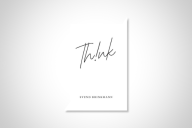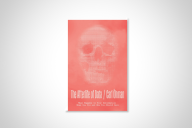You have /5 articles left.
Sign up for a free account or log in.
Some weeks back, a publishing house in Spain announced that it would be issuing a deluxe facsimile edition of the enigmatic and sui generis volume best known as the Voynich manuscript, in a print run limited to 898 copies, selling at 7,000-8,000 euros each. That’s the equivalent of $7,400 to $8,400 -- a price tag guaranteed to separate the true bibliomaniac from the common run of book collectors.
But then Beinecke 408 (as the volume is also known, from its catalog reference in Yale University’s rare books collection) tends to throw a spell over those who contemplate it for very long. Running to about 200 parchment pages -- or closer to 240, if you count a number of long, folded-up sheets as multiple pages -- it is abundantly illustrated with drawings of plants that have somehow eluded the attention of botanists, surrounded by copious text in an unknown alphabet. It looks like what you’d get from throwing Roman, Greek and Arabic script into a blender along with a few alchemical symbols. At a certain point the artwork takes a noticeable turn: the plants are accompanied by miniature drawings of naked women sitting on the leaves, emerging from broken stems or bathing in pools. Those slightly Rubenesque figures also show up in what appear to be a number of astronomical or astrological charts. A final section of the book consists of page after page of closely written text, with starlike symbols in the margin that seem to indicate section or paragraph divisions.
It sounds like something H. P. Lovecraft and Jorge Luis Borges might have concocted to pull a prank on Umberto Eco. But mere description of the Voynich manuscript little prepares you for the experience of turning its pages, even in the considerably less expensive hardback just published by Yale University Press. The editor, Raymond Clemens, is curator of early books and manuscripts at the university’s Beinecke Rare Book & Manuscript Library. The color reproductions of each page are made at the size of the original; the ink or paint used by the illustrator at times bleeding through slightly behind the text and artwork on the other side of the parchment. The thing that strikes the eye most about the writing is how concentrated it looks: printed in a crisp, precise hand by someone who, especially in the final pages, seems determined to make good use of the space without sacrificing readability.
Which is, of course, the maddening thing about the book -- almost literally so, at times. The effort to figure out what it says has tested, and defeated, the mental powers of numerous researchers over the past century, beginning not long after the bookseller Wilfrid M. Voynich acquired it in 1912. (The Yale edition includes a detailed biographical article on Voynich, who seems to have escaped from the pages of a novel by Dostoyevsky before settling in London and moving, eventually, to New York. The label “bookseller” is too narrow by far. One telling detail: his father-in-law was George Boole.)
The first scholar to throw himself into solving the riddle was William Romaine Newbold, professor of moral and intellectual philosophy at the University of Pennsylvania, whose The Cipher of Roger Bacon was posthumously assembled from his notes and manuscripts and published in 1928. Its title reflects the earliest known attribution of the work: a letter from 1665 or ’66 reports that the book had been owned by Rudolph II -- the Holy Roman Emperor, patron of Johannes Kepler and alchemy enthusiast -- who believed the author to be the 13th-century English scientist and monk Roger Bacon. (Not to be confused with Francis Bacon, also an English scientist, born 300 years after the monk’s prime.)
Knowing that Roger Bacon was a pioneer in the study of optics and had experimented with lenses, Newbold boldly combined fact and speculation to argue that the Voynich manuscript reported Bacon’s discoveries using the microscope (spermatozoa, for example) and the telescope (the Andromeda galaxy). Furthermore, the hieroglyphs in the mysterious text actually consisted of much smaller letters -- combined in a code of great sophistication -- which were only visible with a microscope.
Quod est demonstrandum, sort of. Admirers of Roger Bacon found the interpretations plausible, anyway. But in 1931, the medievalist journal Speculum published a long and devastating assessment of Newbold’s methodology, which concluded that the code system he’d deduced was so vague and arbitrary that the messages he unearthed were “not discoveries of secrets hidden by Roger Bacon but the products of his own intense enthusiasm and his learned and ingenious subconsciousness.”
That judgment surely inspired caution among subsequent Voynich analysts. I found one paper, published in Science in 1945, claiming to have determined that the manuscript was written by a 16th-century astrologer and herbalist known to have had a particular interest in women’s illnesses. The researcher ends his report by insisting that it was not the product of “a learned and ingenious subconscious.” Be that as it may, the author also felt that “present war conditions” made it “undesirable to publish, at this time, the details of the key.”
That note of hesitation foreshadows one of the many interesting points made in the generally excellent short essays accompanying the Voynich manuscript in the Yale edition: “The extent to which the problems it poses have been a matter of professional as well as amateur interest is reflected in the fact that the best book-length introduction to this ‘elegant enigma’ was written by a government cryptologist … and published in-house by the U.S. National Security Agency.” The monograph (now in the public domain and available to download) indicates that the NSA had already played host to quite a bit of hard-core Voynich inquiry by the late 1970s, and who knows how much computational power has been directed at cracking it since then.
The Yale University Press edition ventures no theory of who created the Voynich manuscript or what it says. A chapter reporting on examination and tests of the material indicates that the parchment can be dated to roughly 1420, give or take a couple of decades, while multispectral imaging reveals the erased invisible signature of a pharmacist who died in 1622, using the noble title he received in 1608. That may not remove all possibility of a hoax, but it would seem to backdate it by a few centuries. The enigma, like the book itself, has proven nothing if not durable; this handsome and (relatively) affordable edition will serve to spread its fascination around.








